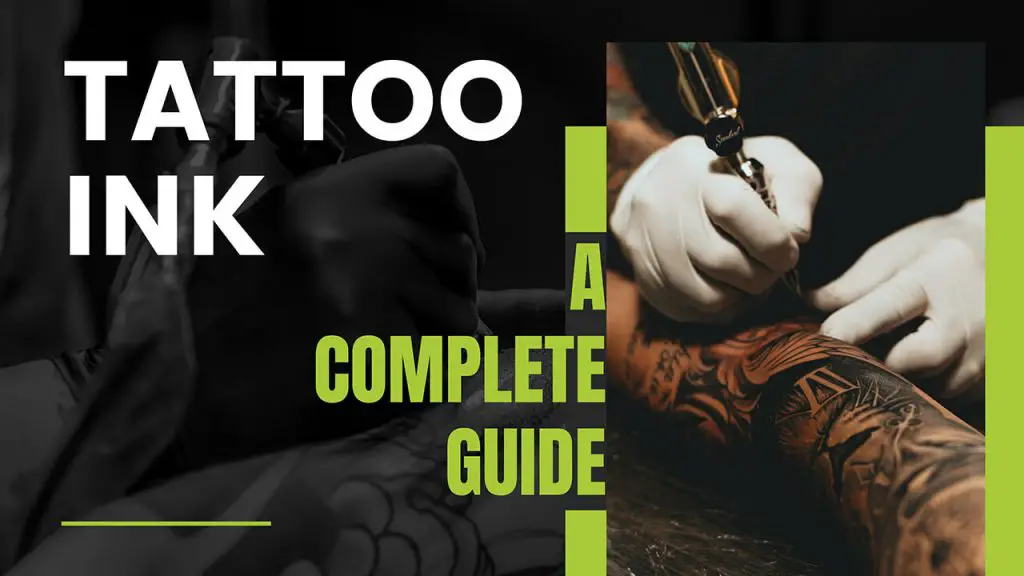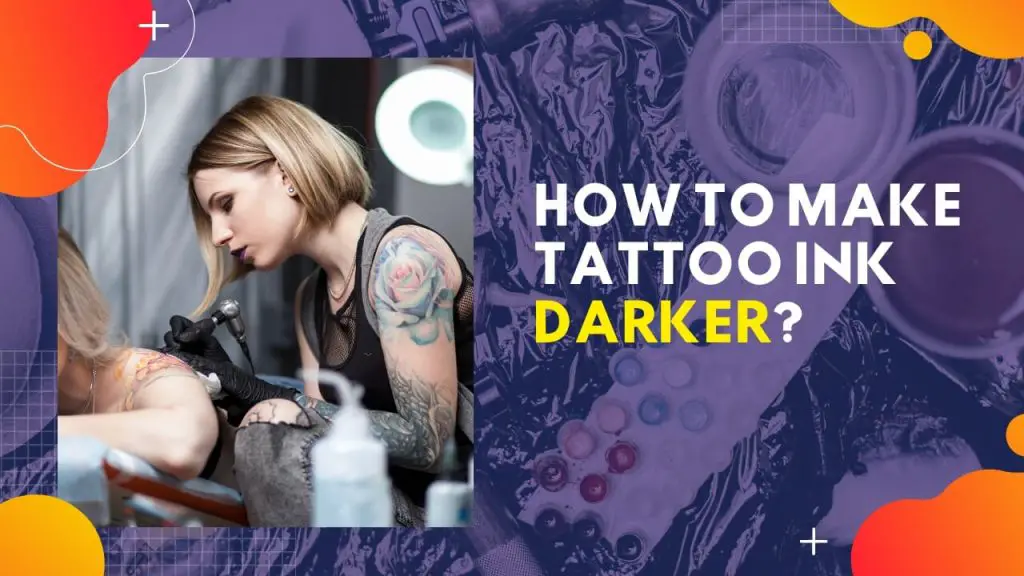Have you been facing monotony with the same typical tattoo designs and standard tattoo inks? We don’t blame you for that. For a person who is driven towards creative art like tattoos, he cannot survive seeing the same stuff everywhere.
There has to be something different and unique about the art before the person loses interest.
How about going for an inkless tattoo? Does that sound supernatural, natural, unique, or unnatural? You can share your opinions at the last of this article but for now; let’s keep this interesting topic on.
The term ‘Tattoo without ink’ raised the interest of many tattoo designers as they knew more people would love to try this new technique of being inked with no ink at all!
Can you get a tattoo without ink?
The answer is yes! You can go for tattoos without ink. The process involves getting an inkless tattoo, healing, and slow fading of the tattoo design resulting in different types of feelings.
Inkless tattoos were once less prominent than the standard inked tattoo versions.
For those where the permission of inked tattoos is limited or restricted, inkless tattoos are the best options as you know it is there and it is right there with you.
The technique of tattoos without ink involves dry ink. It means they allow the tattoo to dry when the gun is punctured in the skin, it leaves scarring instead of ink.
The process of inking may be the same but the only difference between the two is that inkless tattoos do not leave ink marks and fade with time.
Why do people go for inkless tattoos?
Inkless tattoos give a distinct perm or non-perm feeling. People go for such tattoos to celebrate some sort of life-changing experience.
One of the important factors in inkless tattoos is that they change and evolve again as if you have someone who keeps coming for you and then disappears again and vice-versa.
Those who have home, job, or culture restrictions opt for tattoos without ink. They just prefer to do it and keep it low-key. It is like you have achieved your experience and passion without making it too evident or boasting about it.
Remember a few things when you choose tattoos without inks. These guidelines will come in handy to know what to say your tattoo artist;
- Ask your tattoo artist to make heavier or thick lines as these produce better results in inkless tattoos.
- Prefer not to stick to finer details as these will eventually fade showing zero or faded results.
- You also need to see if your tattoo artist etches the design several times before completing the tattoo on you.
- Do not go for shading. Inkless tattoos look the best with simple lines instead of shades
- Texts are more common and most preferred than any design for tattoos without inks.
What is a substitute for tattoo ink?
Initially, the tattoos inks were considered are herbal as these were directly made from Mother Nature. The materials or compounds used to form inks were non-toxic.
You can make substitute tattoo inks at home. If you know the process and procedure well, you can make one at home however, be careful not all DIYs are a success.
Even if you win to make a tattoo ink for yourself, it would be wise to get the tattoo done by a professional artist only. In ancient times, many tattoo artists made pigment inks from natural materials.
One of the coolest and simplest processes was by mixing the ashes of burnt wood with water to form a crude black ink.
The color of the ink produced was dense black. Some even mixed vodka instead of water as vodka is clear and has antiseptic properties.
These are some of the best substitutes to make tattoo inks and go the non-toxic way. We have some more recipes to share, just keep reading.
How do I make homemade tattoo ink?
Before we begin to share the recipes and processes of how to make homemade tattoo ink, we would like to mention that people do this at their own risk to be a part of the DIY society.
It would be wise to take a second opinion from an expert who has done the same in the past. Sharing experiences will help you to get better at the pros and cons of homemade tattoo inks.
Before trying the following recipes keep the below rules handy with you;
- Wear sterile hand gloves
- Wash your hands before you touch any ingredients and pat dry
- Cover your mouth to avoid ink spillage on the face
- Avoid touching the mixture with bare hands
- To make homemade tattoo ink, pick dry pigment from a good tattoo shop or online.
- If you are unable to find a good brand in witch hazel, you can substitute it with Listerine.
- Avoid using distilled water as water lacks antibacterial properties.
- Avoid heating any supplies to sterilize those. It will only affect the pigment particles and that will lead to ill-health symptoms.
- Prefer using mason jars to directly shift the produced ink from the blender.
1. Recipe for ancient tattoo inks at home
Ingredients:
- Black carbon ashes = 1 cup
- Vodka
Process:
- Use a sterile blender and put the ashes in it.
- Slowly add vodka until you see a perfect consistency similar to commercial tattoo ink.
- Put the blender option on medium speed and blend for up to an hour. (Of course, you need to keep switching on and off at intervals to avoid heating up of blender).
- If you still find the mixture too watery you may add some more ash. If the mixture is too thick, then you need to add some more vodka.
- As soon you get the desired mixture, use it instantly.
2. Recipe for professional top grade tattoo ink
Some professionals prefer to make their inks at home. It gives them further boost and confidence with the art.
Ingredients:
- Vodka or Witch Hazel = 28 ounces
- Medical Grade Glycerin = 1 tsp.
- Propylene Glycol = 1 tsp.
- Pigment Powder = 1 to 2 inches
Process:
- Mix three ingredients and those are; Vodka or Witch Hazel, Propylene Glycol, and glycerin. Mix it properly until the mixture becomes one.
- In a blender, add the above-mentioned amount of pigment powder.
- Now, slowly add liquid to make it slurry.
- Blend on low speed for at least 30 minutes.
- Switch on and switch off the blender at intervals to keep the blender cool and check the consistency of the mixture.
- If you find the mixture too watery, you will need to add a pinch of pigment powder at one time and then blend again.
- Put the blender on a medium speed for one hour to get the desired consistency.
- Pour the final ink into a sterile container and cover it with a lid.
- Keep it away from direct sunlight.
Recommended Products:
3. Recipe for prison tattoo ink
This recipe will let you know how tattoo artists create black ink in prison. From simple baby oil, they manage to make amazing prison inks.
Since many people look for information on how to make homemade prison ink, we are sharing the recipe with you. However, we advise you to stick to professional prison inks unless tattoo art is your main forte or subject.
Ingredients:
- Baby oil or plastic razor (optional)
- Mirror
- Shampoo
- Bottle Cap
- Razor Blade
- Water
- Ethyl Alcohol
- Toothpick
Process:
- With the help of a lighter, burn the plastic razor or heat the baby oil we mentioned to create smoking.
- At a distance of 3 to 5 inches away from the oil or burning plastic, place a mirror.
- Be prepared to catch the soot particles that are settling on the surface of the mirror while the material begins to smoke.
- Once the mirror releases black color, scrape the mirror with the help of a razor blade and gather all the soot you can from the scrapings. Use a bottle cap to collect it.
- Add one or two drops of water to the bottle cap.
- Slowly mix the ashes and water with the help of a toothpick.
- To disinfect the mixture, you will need to add a drop of ethyl alcohol and few drops of shampoo. This will not only help to disinfect the mixture but also make it thick.
- Dispose of any leftover ink immediately and use only that is collected.
Recommended Products:
What will happen if you use pen ink for a tattoo?
Pen inks are not manufactured in a sterilized environment. Moreover, pen ink is not good for skin either. Don’t take others as fools who are spending so much on buying professional tattoo inks.
Although these have minimal risks when you draw tattoos on your skin, if you are thinking to make these as substitutes for tattoo inks, it is a bad idea!
Thus, for arts and crafts pen inks, highlighters, markers, etc, can be considered ok to experiment with however, for a deeper skin art like tattoos, we recommend you to strictly stick to professional tattoo inks.
Your skin is likely to get exposed to infections, allergies, and other skin reactions. Tattoo inks are sterile inks and they are manufactured in a sterilized environment as they know the purpose of the ink on the skin.
Similarly, the purpose of pen ink is different and thus, the manufacturing environment is different too.
Some pen inks are known to have the same components as car paint or printer inks and thus, it won’t be a good idea to expose your skin to harmful chemicals that are not skin-friendly.
Conclusion:
If you are new to tattoo art and do not know where to begin, we suggest you stick to professional tattoo experts and professional tattoo inks. The recipes and experiments explained by us are again to be performed by someone who is experienced in this art or subject. Remember, now all DIYs are safe either and you may need some professional support to do these at your risk at home.






